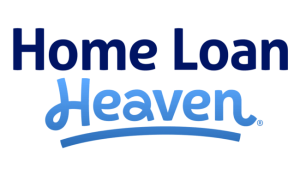Home / Home Loans / Types of home loans

Key takeaways
- If you’re looking to take out a home loan, it’s important you figure out which type of home loan is going to best meet your needs.
- To do this, you’ll need to understand the distinctions between the many different types of home loans, and how each of them work.
- Knowing what you need from a home loan will help you decide which type might be suitable for you and your financial situation.
Expert tips for choosing the right loan type for you
Our General Manager of Money, Stephen Zeller, wants to see consumers end up with the right type of home loan for their specific financial needs. With that in mind, he’s got some tips for prospective borrowers trying to decide what type of home loan or refinancing option might be suitable for them:

A lower interest rate isn’t always everything
As a rule of thumb, the lower your interest rate the more you’ll save in interest charges over the life of your home loan. However, by only looking for the most competitive interest rate on offer you might be forfeiting certain features and benefits that might have a more significant impact on the value you get over your loan term (like say, an offset account).
Compare your options
The first few home loan products you look at may not be the best-value options currently on offer. You should always make sure you’ve shopped around and compared a variety of different home loans before committing to taking out a specific loan product.
We’re here to help
There’s a huge range of home loan products on the market, which can make it tricky to figure out which one might be the most appropriate for you and your needs. Our expert team of online mortgage brokers are on hand to guide you through the process and help you find a home loan that suits your circumstances.
Fixed, variable and split rate home loans
Fixed rate home loans
Fixed rate home loans are a type of home loan that come with a stipulated period when the interest rate is locked in and can’t change. This period typically ranges from one to five years.
After the fixed interest rate period ends, the home loan’s interest rate will typically revert to the lender’s standard variable rate, which could be noticeably higher than the market average variable rate.
Fixed rate loans usually come with fewer feature offerings than some other types of home loans, and may be more suitable as a ‘no frills’ options for first home buyers or borrowers with simpler loan requirements.
| Pros | Cons |
|---|---|
|
|
Variable rate home loans
Conversely, variable rate home loans are a type of home loan with interest rates that – as their name suggests – vary. This usually happens in line with the Reserve Bank of Australia’s (RBA) cash rate announcements, with variable interest rates moving up or down to follow the movements of the cash rate over the life of the loan term.
That being said, lenders have the freedom to change their variable interest rates at any time, which can be a double-edged sword. If the cash rate goes down, so might your home loan interest rate, and with it, your home loan repayments. But if the cash rate goes up, the size of your home loan repayments goes up with it.
However, variable rate mortgages compensate for some of that unpredictability by generally having a broader feature offering than their fixed-rate counterparts. Features like mortgage offset accounts and redraw facilities are common options to have on variable rate home loans, but these features can come at a cost – generally higher regular fees.
| Pros | Cons |
|---|---|
|
|
Split rate home loans
Split rate home loans may offer a ‘best of both worlds’ solution, by letting you split your home loan amount into two components: one with a fixed rate and one with a variable rate. This can help you hedge your bets by ensuring that at least part of your home loan is safe from interest rate fluctuations. Much like a fixed rate home loan, your entire home loan will generally revert to a variable rate at the end of the stipulated period.
With a split loan, you can afford yourself a measure of confidence knowing that the interest rate and repayment size on your fixed rate component won’t be changing during the fixed period. And while the variable rate component is susceptible to interest rate hikes, you’ll probably feel that pocket pinch to a lesser degree because it’s only being applied to part of your home loan, rather than the whole thing. Furthermore, you still get to benefit from falling interest rates, just to a lesser extent.
| Pros | Cons |
|---|---|
|
|
Owner-occupied vs investment home loans
Owner-occupied home loans
 The term ‘owner-occupied home loan’ refers more to the purpose of the loan (i.e. buying a residential property that you’ll call home) rather than its actual nature as a financial product. For example, you could have a fixed-rate owner-occupied home loan, a variable-rate owner-occupied home loan or a split-rate owner-occupied home loan. It’s more about what the loan’s for rather than how the loan works.
The term ‘owner-occupied home loan’ refers more to the purpose of the loan (i.e. buying a residential property that you’ll call home) rather than its actual nature as a financial product. For example, you could have a fixed-rate owner-occupied home loan, a variable-rate owner-occupied home loan or a split-rate owner-occupied home loan. It’s more about what the loan’s for rather than how the loan works.
Be sure to do your own research on the different types of home loans to find a owner-occupied home loan that works for you and meets your financial needs.
Investment home loans
Like their owner-occupied counterparts, investment home loans aren’t a specific type of home loan product – in the sense that almost all of the other types of home loans on this page could technically be taken out as an investment home loan. An investment loan is simply a type of home loan used to purchase a property for investment purposes rather than residential purposes.
If you’re considering taking out an investment home loan, you’ll be well served by deciding what type of home loan you might want to take out, and then looking at its pros and cons as listed on this page.
Principal & interest vs interest-only home loans
Principal & interest home loans
A principal & interest (P&I) home loan is any type of home loan in which your home loan repayments have both a principal component and an interest component. This means that, unlike interest-only home loans, your home loan repayments are going towards paying off both your home loan principal (the amount you initially borrowed) and the interest that your debt is incurring.
A P&I home loan isn’t a specific type of home loan so much as a repayment structure for whatever type of home loan you do end up taking out. Most types of home loans will be P&I by default, or at least offer P&I as a repayment option.
Interest-only home loans
An interest-only home loan is a type of home loan in which you’re only required to pay off the interest accumulated on your home loan principal for a set period of time (e.g. five years). That means that, when you make your home loan repayments, you’ll only be required to pay interest accrued on your principal for the interest-only period, as opposed to making standard principal and interest repayments.
Interest-only loans could be worth considering for those looking to maximise the value they receive from their investment properties. By deferring your principal repayments for even just one year (if not several), you could potentially invest those funds elsewhere, or otherwise take advantage of your increased cashflow.
You may also be able to benefit from a series of longstanding tax advantages afforded to property investors – and the value of your investment property might even increase in the meantime.
However, this is a potentially complex investment strategy, so you may want to speak to a mortgage broker or financial advisor before committing to an interest-only home loan.
| Pros | Cons |
|---|---|
|
|
Some less common home loan types
Low doc home loans
Getting a traditional type of home loan can be tricky for self-employed individuals, who often lack the traditional documentation necessary to be vetted and approved for a loan. Low documentation home loans, commonly known as low doc home loans, offer a solution for these kinds of borrowers.
Rather than submitting tax returns and personal bank statements, a self-employed low doc loan applicant will typically be required to submit their ABN and Business Activity Statements (BAS). Lenders that offer low doc home loans may require a bigger deposit or charge a higher interest rate, or both. This is because low-doc borrowers are generally viewed as high risk due to their non-conventional employment situations.
| Pros | Cons |
|---|---|
|
Provides a valuable option for those who may struggle to get a home loan otherwise |
|
Non-conforming home loans
‘Non-conforming’ is a catch-all term for types of home loans that don’t conform to conventional home lending criteria. Non-conforming home loans are generally aimed at those with a poor credit history or unique employment situations, who may struggle getting a conventional or ‘prime’ home loan.
While non-conforming home loans can be an invaluable (and potentially only) option for those unlikely to be approved for a conventional home loan, they’re not without their drawbacks. While non-conforming home loans work relatively similar to their prime counterparts (e.g. a fixed rate non-conforming home loan won’t look too different from a fixed rate prime home loan in terms of functionality), they typically come with a higher interest rate and higher fees. These inflated costs theoretically cover the extra risk you pose as a borrower.
A non-conforming home loan could be an avenue worth exploring for those with a less than stellar credit history or a non-conventional employment situation, but it’s crucial to be aware of the terms and conditions of a loan before you commit to anything.
Construction home loans
 If you’re looking to build a new house or substantially renovate an existing property, a construction loan could be the right type of home loan for you.
If you’re looking to build a new house or substantially renovate an existing property, a construction loan could be the right type of home loan for you.
Construction home loans are essentially what they sound like: instead of borrowing money to buy a home with, you’re borrowing money to build a home with. This type of home loan typically has a progressive drawdown structure, which basically means you don’t get the full balance of the home loan all at once as a lump sum. Instead, your lender will progressively drawdown your loan in line with your construction timeline to pay your licensed builder for the work they’ve completed at each stage of the construction process.
The repayments on a construction home loan are commonly interest-only until the construction is complete; however, some lenders will allow you to make P&I repayments. The amount you’ll repay will vary, as the size of the loan will be different at each drawdown period, and subsequently incur a varying amount of interest.
Bridging loans
A bridging loan is a form of short-term finance designed to help those looking to buy a new home without having yet sold their current home. This can be a handy option for prospective homebuyers who’ve found the home they want to move into but haven’t found a buyer for the home they currently live in yet.
However, these loans tend to come with higher interest rates, and once you’ve sold your old home, you’ll generally have a short, stipulated period within which to pay off the bridging loan. Depending on how much of your new home’s value you borrowed with your bridging loan, that could potentially put a serious squeeze on your finances.
| Pros | Cons |
|---|---|
|
|
Line of credit home loans
A line of credit home loan allows homeowners to turn their mortgage into a revolving credit facility, akin to a credit card in many ways. With a line of credit home loan, you’ll typically be able to borrow up to a set amount based on and secured against the equity you’ve built up in your home. This can be useful for cash flow purposes, especially if you’re eyeing off a second property or planning renovations to your current property.
Having quick and easy access to credit without having to apply for it every time you want to make a withdrawal can be handy, but it’s worth noting that you’ll be charged interest on the withdrawals you make. This interest can typically be either paid off via your regular home loan repayments, or capitalised and added to your loan balance.
Line of credit home loans can be an option worth considering for those looking to renovate their home or invest in property. But like any financial product or credit facility, it’s an option that should be considered thoroughly and at length before being committed to.
| Pros | Cons |
|---|---|
|
|
Reverse mortgage
Reverse mortgages, sometimes also known as retirement home loans, are a type of home loan that allows the homeowner (usually a retired individual) to access the equity in their home in the form of cash withdrawals, a line of credit, a lump sum or a mix of the three (up to a certain percentage of the home’s value). This type of home loan, while offering some advantages, are complex, risky and not suitable for everyone.
While reverse mortgages can be handy for retirees who’ve incurred significant medical or general living expenses and need cash to cover them, withdrawing your equity means you increase the amount you owe on your home loan.
The idea is that the loan will be paid off when you or your estate sell off the property, so, notwithstanding the various disadvantages associated with reverse mortgages, you typically won’t have to worry too much about leaving any debt to your next of kin. Keep in mind, however, that the interest on your loan will compound over time, especially as those with reverse mortgages typically aren’t making any repayments towards the principal of the loan.
This can be especially problematic for older Australians, since the window to repay any outstanding debts is significantly smaller, as is most people’s ability to earn money. However, for those in severe financial need or planning on downsizing anyway, a reverse mortgage can be an invaluable financial tool.
You may want to speak to a financial advisor or obtain legal advice before committing to a reverse mortgage.
| Pros | Cons |
|---|---|
|
|
Meet our home loans expert, Stephen Zeller
Stephen has more than 30 years of experience in the financial services industry and holds a Certificate IV in Finance and Mortgage Broking. He’s also a member of both the Australian and New Zealand Institute of Insurance and Finance (ANZIIF) and the Mortgage and Finance Association of Australia (MFAA).
Stephen leads our team of Mortgage Brokers, and reviews and contributes to Compare the Market’s banking-related content to ensure it’s as helpful and empowering as possible for our readers.




